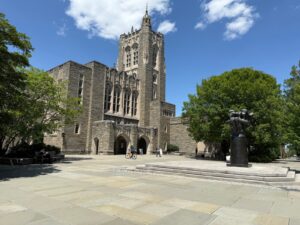
California is preparing for an early start to its annual flu season, with health experts warning that a combination of low vaccination rates and recent mutations of the virus may significantly increase transmission risks. Los Angeles County has already reported its first flu-related death of the season, highlighting a potentially alarming trend as other countries experience severe flu outbreaks earlier than expected.
Dr. Elizabeth Hudson, the regional physician chief of infectious diseases at Kaiser Permanente Southern California, anticipates a spike in flu activity within the next two to three weeks. “We’re expecting an early and likely sharp start to the flu season,” Hudson remarked. Historically, flu infections tend to rise following the Christmas holiday, but this year’s situation seems markedly different.
The challenges for California are compounded by a decline in vaccination rates and the emergence of a new virus subvariant, known as H3N2 subclade K. Dr. Peter Chin-Hong, an infectious diseases expert at UC San Francisco, expressed concern that this mutant strain might lead to increased infections and hospitalizations. “That may translate into more people getting infected. And as more people get infected, a proportion of them will go to the hospital,” he noted.
One significant issue is the timing of the H3N2 subclade K, which appeared late in the summer, after health officials had already decided on the formulation for this fall’s flu vaccine. This decision was made in February, and Hudson pointed out that there seems to be a mismatch between the seasonal flu vaccine strains and the new subvariant. While it is uncertain how much this will impact vaccine effectiveness, data from the UK indicates that the current vaccines still provide substantial protection against hospitalization: vaccinated children were 70% to 75% less likely to require hospital care, while adults were 30% to 40% less likely.
Despite the challenges posed by the new strain, the Los Angeles County Department of Public Health emphasizes the importance of vaccination. “Public Health strongly encourages everyone who has not received the flu vaccine yet this year to receive it now,” the department stated, particularly for those gathering with loved ones during the holiday season.
The situation in countries like Australia provides a concerning backdrop. Reports indicate that Australia experienced an exceptionally severe flu season this year, with over 410,000 confirmed cases—surpassing last year’s record of 365,000. Dr. Michael Wright, president of the Royal Australian College of General Practitioners, remarked, “This is not a record we want to be breaking.” The flu season in Australia was particularly harsh on children, a trend that raises alarms for health officials in the United States.
In Japan, flu cases have surged, prompting national alerts as hospitalizations increase, especially among vulnerable populations such as children and the elderly. The Japanese newspaper Asahi Shimbun reported that children aged 1 to 9 and adults aged 80 and above are among the most affected groups. Taiwanese health officials have also warned of the potential for a second peak in flu cases, following an early peak in September and October.
Concerns regarding vaccination rates persist. In Australia, only 25.7% of children aged 6 months to 5 years received flu vaccinations in 2025, the lowest rate since 2021. In the United States, preliminary data shows that just 49.2% of children had received their flu shots by late April, down from 53.4% the previous year. Among adults, 46.7% were vaccinated as of the same date, slightly lower than the previous year.
The decline in vaccination rates has been attributed to several factors, including misinformation campaigns and hesitancy fueled by prominent figures. Robert F. Kennedy Jr., the U.S. Secretary of Health and Human Services, has faced backlash for his public comments casting doubt on vaccine safety, which have contributed to declining public trust in immunizations.
Dr. Hudson emphasized the importance of obtaining credible information about flu vaccines. “Vaccines save lives. The flu vaccine in particular saves lives,” she stated.
With the flu season approaching, health experts recommend that individuals protect themselves through vaccination, frequent handwashing, and wearing masks in crowded indoor settings. In particular, high-risk populations—including young children and seniors—are advised to seek antiviral medications like Tamiflu if they exhibit flu symptoms. These medications are most effective when administered within one to two days of symptom onset.
As California navigates this potentially challenging flu season, the emphasis on vaccination and public health measures will be crucial in mitigating the impacts of this infectious disease.







